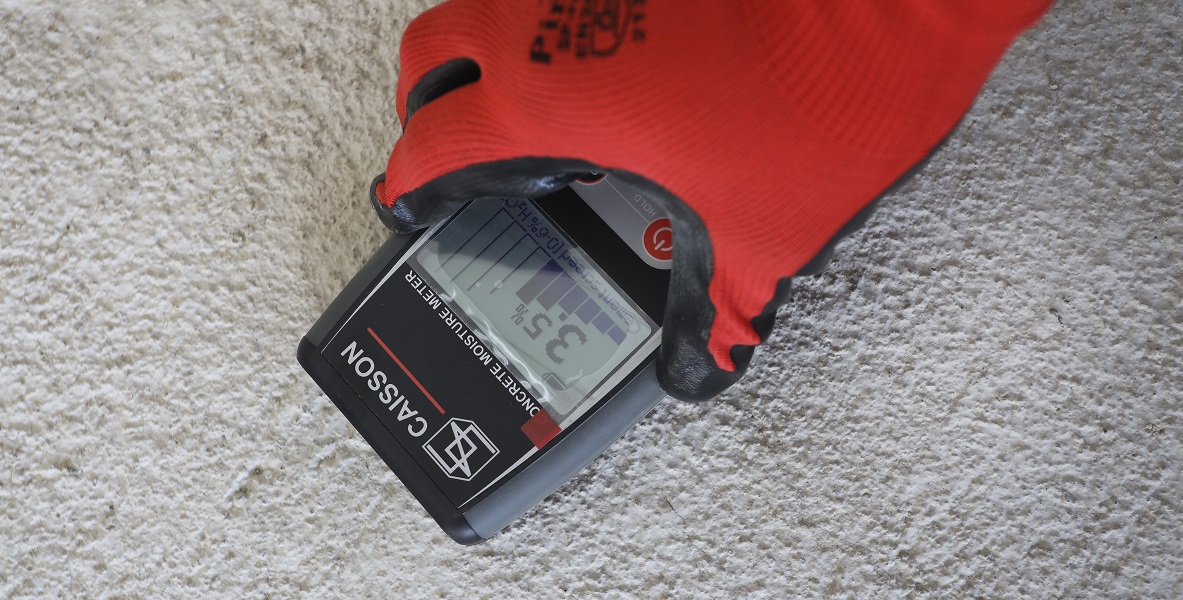What you need to know about moisture and substrates
Moisture vapour within a concrete substrate can affect the successful installation of the final floor covering. The tolerances vary from tiles to laminates and vinyl flooring, so it is important to check with the manufacturer for the stipulated levels on the product you are installing and to measure the moisture levels within the substrate carefully.
Ordinarily, 6 weeks are required for a new concrete substrate, or 4 weeks for sand/cement screed topping to cure and the construction moisture to dry out, prior to installing final floor coverings. However, it can happen that even though the floor surface may appear to be dry at the time of installation, when tested, moisture levels within the surface are higher than the manufacturers recommendations. This can be due to insufficient time allowed for curing / drying out of the substrate, or the moisture levels may remain too high because of high water tables, seasonal fluctuations, changes in geographic surface run-off and structural changes in and around the building.
For best results when testing, conduct tests across the entire slab, in order to have a better understanding of how and where moisture is distributed across the space. This is particularly important for areas of potential high moisture such as those with limited airflow, little or no sunlight and at doorways to the outside. Similarly, be sure to perform these tests correctly by following the instructions from the manufacturer of the test you’ve chosen to use.

If there is no damp-proof membrane below a surface bed, or if moisture levels do not attain the required levels – 5% (50% RH) or less for tiles and 3% (75% RH) or less for vinyl flooring, a suitable moisture, or vapour barrier should be installed such as TAL Vapourscreen WB. This is not to be confused with a surface sealant, which is applied as a protective layer over a floor substrate or covering.
Whilst the additional cost may seem an unnecessary addition to the flooring system, the cost of repairing a failed flooring installation far outweighs the costs of the vapour barrier. Using a multi-level system approach when installing floor coverings is key to enjoying a long-lasting and durable installation, and a happy client.
For more information on the value of vapour barriers and on multi-level installation systems for floor coverings, contact the TAL Technical Advice Centre.
[Back]
blog comments powered by Disqus

